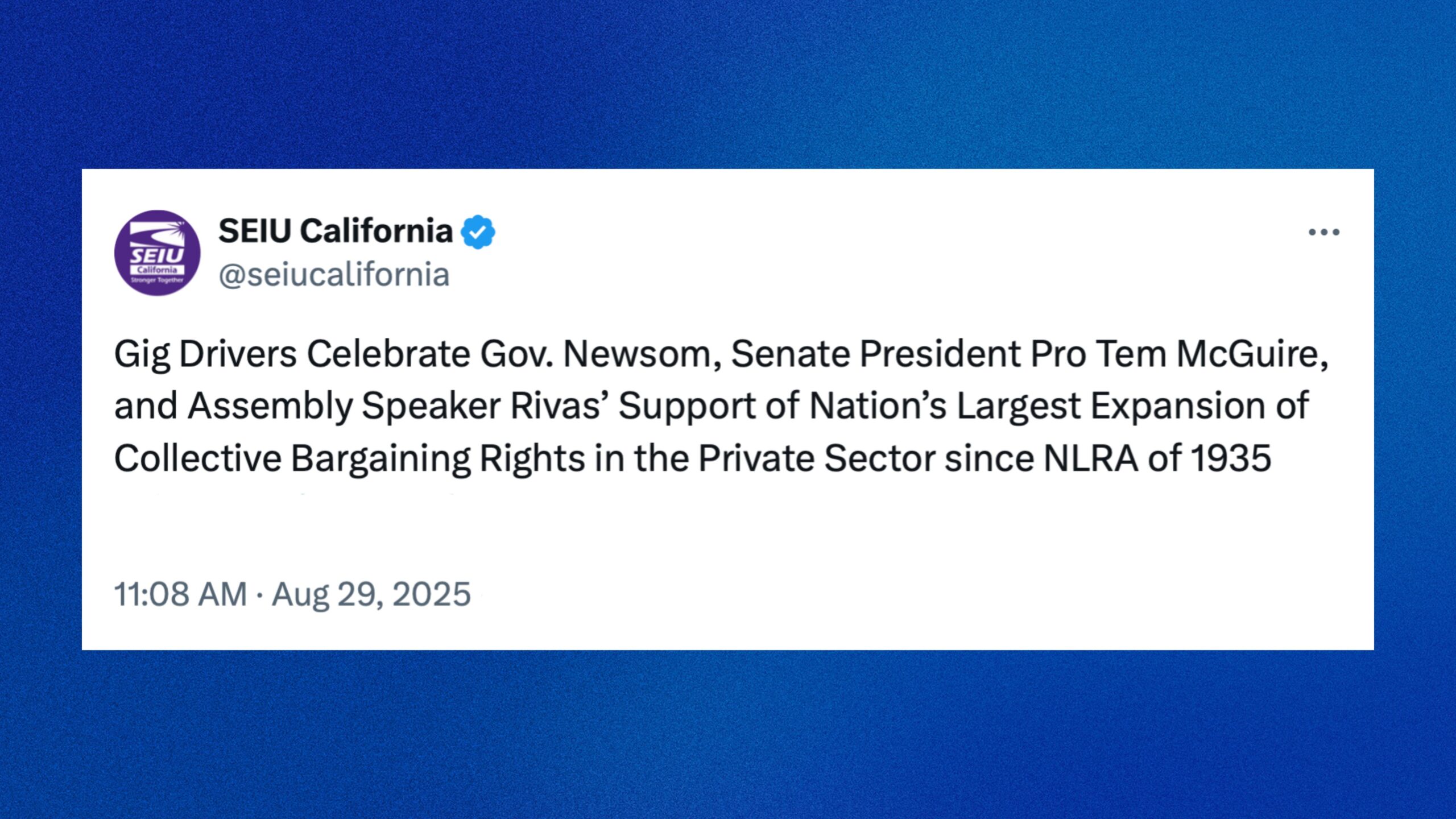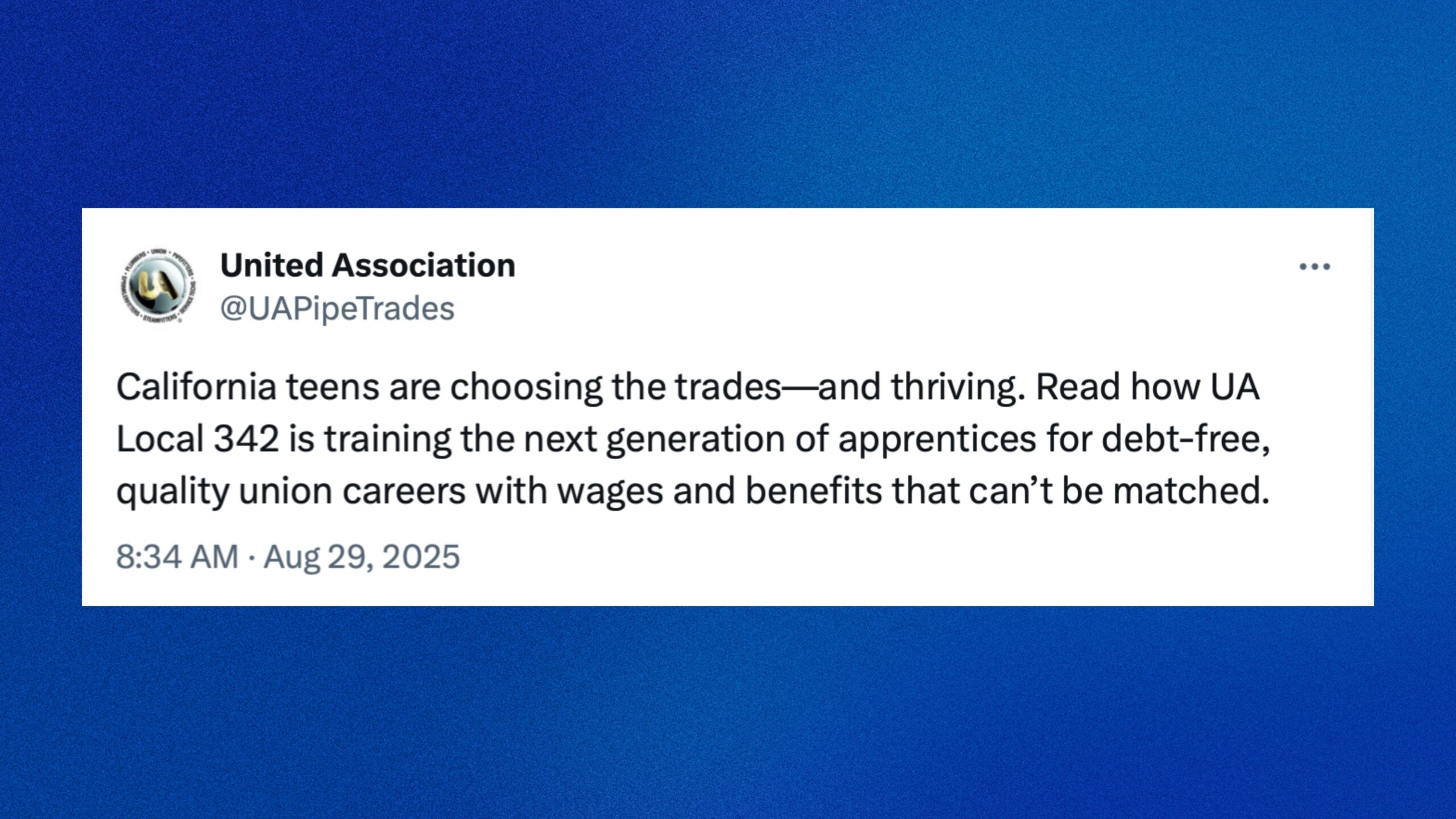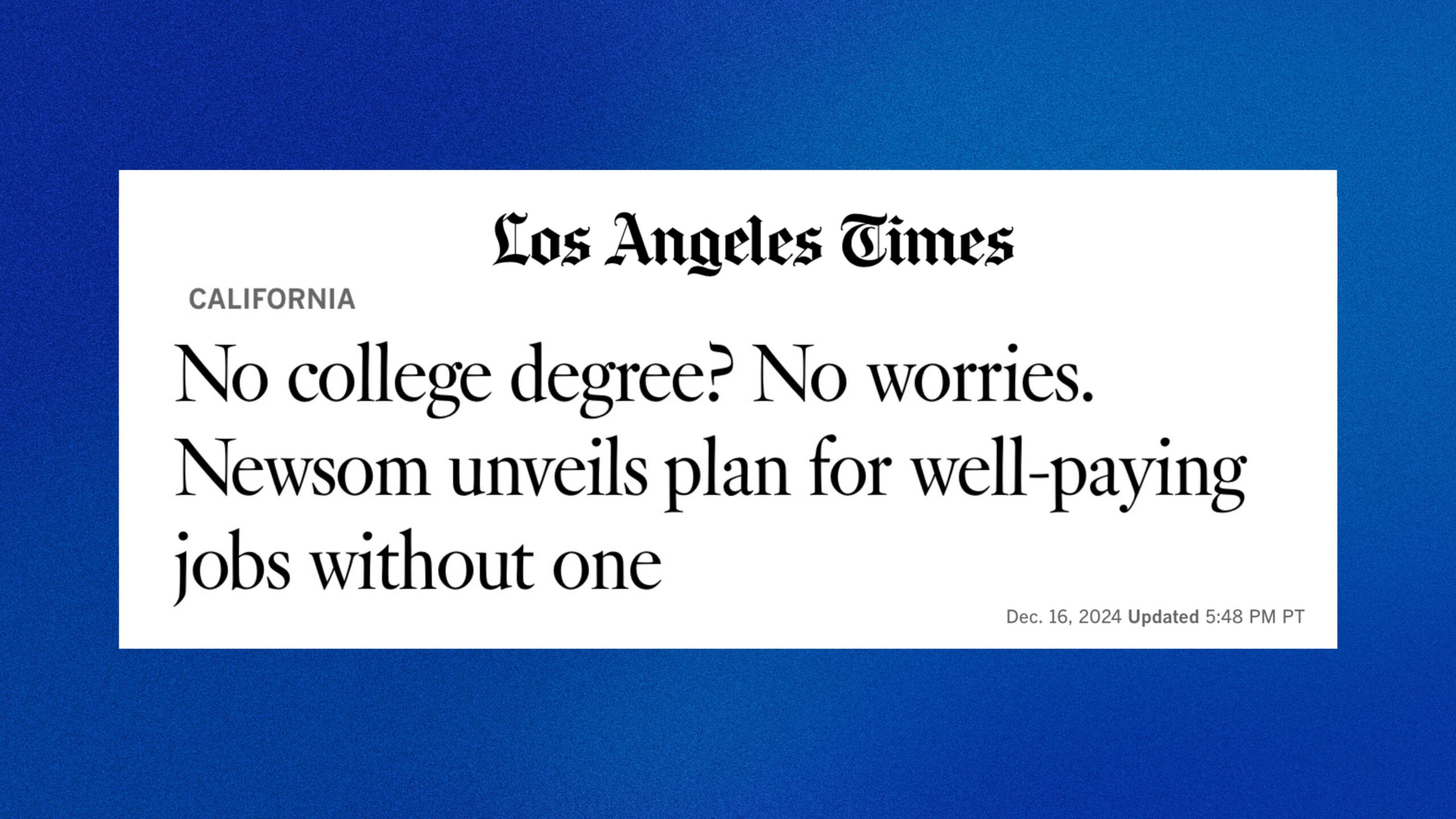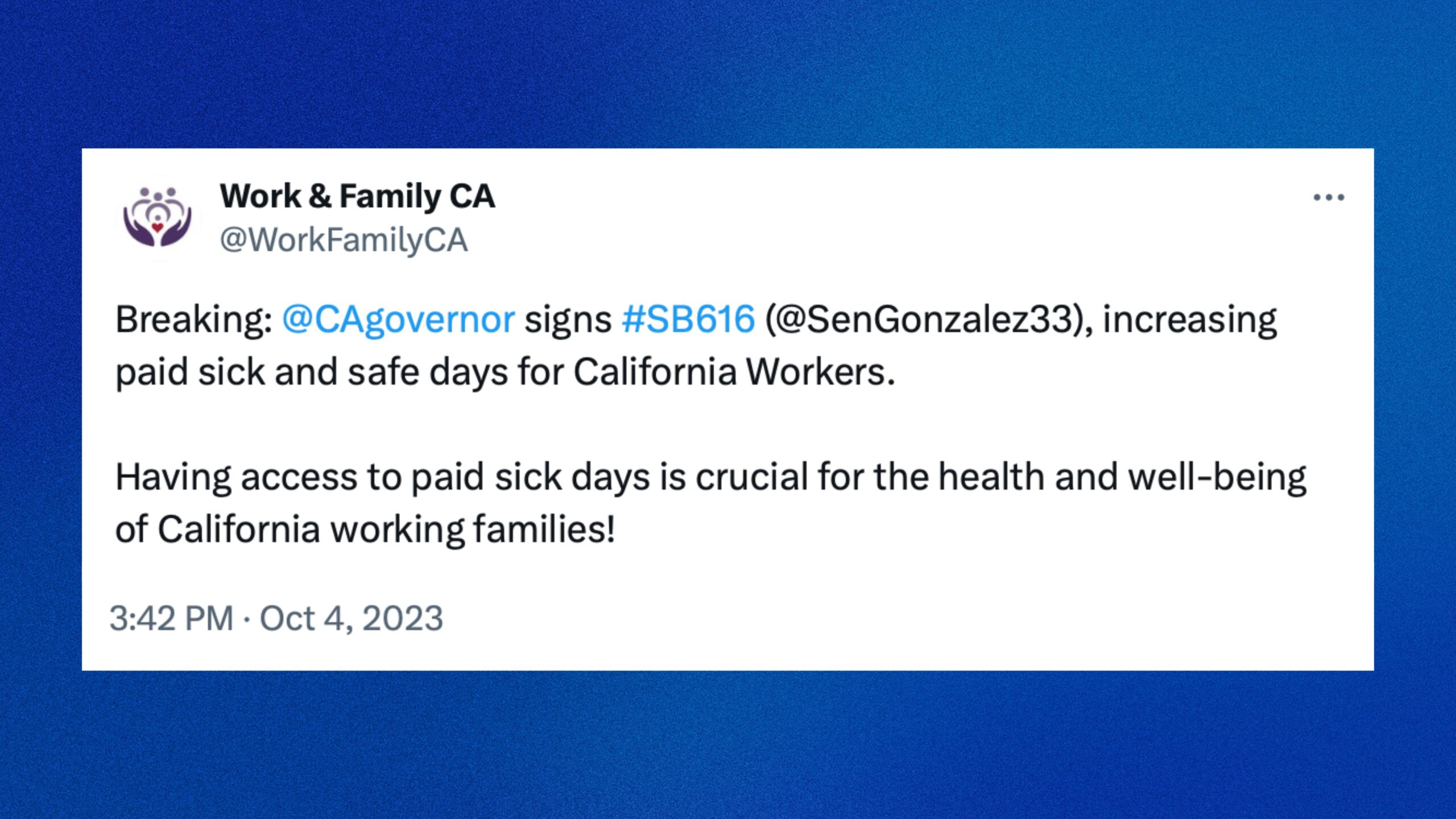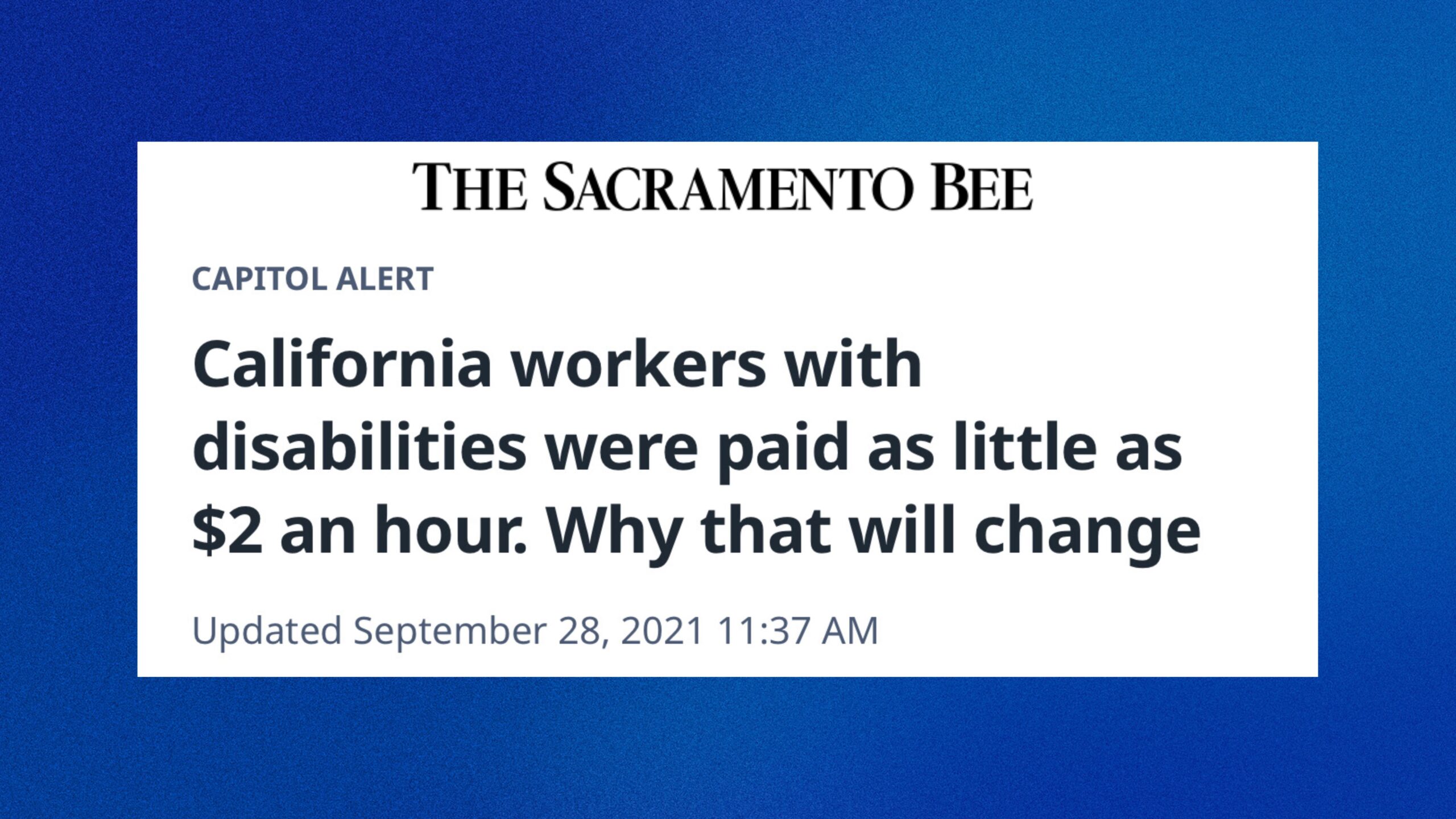What you need to know: California’s economy continues to dominate, and a new report shows that California continues to lead as a top state for workers.
September 1, 2025 - SACRAMENTO — Earlier this year, California surpassed Japan as the world’s 4th largest economy. The state continues to lead across multiple sectors and industries,  and a new report shows that California is a national leader for workers, with strong policies on wages, worker protections and labor rights – which make our communities, businesses, and families stronger.
and a new report shows that California is a national leader for workers, with strong policies on wages, worker protections and labor rights – which make our communities, businesses, and families stronger.
“This Labor Day and every day, we advance our work to support labor unions and expand access to good jobs, secure safe and healthy workplaces, and create new pathways for upward mobility. Our economy is thriving because we invest in our people, prioritize sustainability, and believe in the power of innovation. In California, we know what’s good for workers is also good for business, and it’s how we have become the strongest and largest economy in our nation.”
Governor Gavin Newsom
Strong unions and a strong and empowered workforce makes a strong economy, and supporting and protecting workers is a key component of California’s success. It’s why California’s economic growth outpaces all other large states. It’s also why California’s economy is growing faster than the national economy — and why California successfully rebounded after the COVID-19 pandemic, adding more than 3 million jobs since April 2020.
California creates substantially more businesses than other states, including Florida and Texas — leading to more jobs and opportunities for our workers. California is home to more than 4.2 million small businesses, representing 99.9 percent of all businesses in the state and employing 7 million people. With an increasing state population California is the nation’s top state for access to venture capital funding, and manufacturing, high-tech, and agriculture.
Governor Newsom’s support of labor unions, working families and economic development has made California a top place to open a business and a top place for workers.
Here’s how California is supporting workers and businesses
✅ Standing with unions and the right to organize: Recently, Governor Newsom, legislative leaders, SIEU, and Uber and Lyft announced a deal creating a new framework to empower rideshare gig workers and improve rideshare quality and affordability.
✅ Creating pathways to high-demand jobs: Since 2019, California has served 215,393 registered apprentices, solidifying its position as the nation’s leader in apprenticeship programs. California is well on its way to meeting the Governor’s goal of providing 500,000 apprenticeships by 2029.
✅ Protecting fast food workers: In 2023, California announced a landmark $20/hour fast food minimum wage standard to help ensure a living wage and created the Fast Food Council within the Department of Industrial Relations, creating a process that gives workers a voice in developing minimum fast food restaurant employment standards related to wages, working conditions, and training. The increase has resulted in higher wages without reducing work hours, staffing, or employee benefits, according to the research conducted by Harvard’s Kennedy School and UC San Francisco.
✅ Expanding opportunities for those without a college degree: Governor Newsom also launched a new Master Plan for Career Education that prioritizes hands-on learning for students and workers, bolstering pathways to high-paying and fulfilling careers, including those that do not require a college degree. As part of the plan, the state will establish Career Passport to help workers showcase their skills and experiences to potential employers. This tool is designed to make it easier for people to prove their qualifications and access good jobs.
✅ Honoring our veterans entering the workplace: Governor Newsom is scaling up the state’s Credit for Prior Learning (CPL) effort to make it easier for Californians — especially veterans and members of the military — to turn their real-world experience into college credit. For example, veterans could earn credit for skills learned during military training, or students who volunteered through a service corps could apply their experience toward their education once this effort is implemented.
✅ Making it easier to enter into the state workforce: To help open the door to more workers, state has now removed educational requirements such as college degrees and other credentials for nearly 30,000 state jobs, and is continuing to identify more positions where this requirement is no longer needed. Additionally, the state has streamlined application processes and consolidated positions to make it easier for state employees to advance.
✅ Expanding leave for workers and families: Governor Newsom signed legislation giving workers new access to at least five days of paid sick leave each year. The Governor also increased paid family leave from 6 to 8 weeks for parents of newborn children, and put paid family leave in reach of more lower-wage workers by increasing the wage replacement for State Disability Insurance — enabling workers to take paid sick leave or unpaid family leave in order to care for any person designated by the employee, including non-family members.
✅ Ending exploitative practices: The Governor signed legislation to protect warehouse workers from unsafe production quotas and nation-leading legislation to end exploitative piece-rate compensation for garment industry workers. The Governor also signed a measure directing Cal/OSHA to create an advisory committee to recommend state policies to protect domestic workers and a bill to ensure that workers with disabilities are paid a fair wage. In 2019, the Governor signed legislation giving child care workers the right to join a union and collectively bargain with the state.
✅ Protecting workers with disabilities: This year, a new law signed by the Governor went into effect to ensure that workers with disabilities earn at least the standard minimum wage by ending new subminimum-wage licenses and phasing out existing licenses. By guaranteeing fair pay, California affirms that every worker — regardless of ability — deserves dignity and equal treatment.
✅ Fostering growth in all regions and in a variety of job sectors: In February, Governor Newsom released the California Jobs First Economic Blueprint – a new economic vision for California’s future. The Blueprint outlines key initiatives to support regional growth, invest in 21st century job training, create an attractive environment for job creators and strengthen California’s innovation economy – all to help increase access to good-paying jobs for Californians. Last week, the Governor awarded $80 million in implementation funding to support eleven projects in specific sectors, including aerospace & defense, agtech, bioeconomy, and life sciences.



